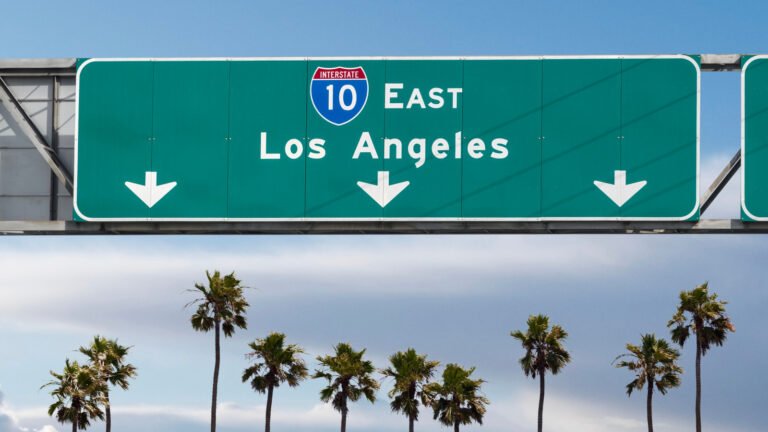
Toyota is pushing the limits of hydrogen power
Toyota’s hydrogen journey hit a snag recently. Owners of the hydrogen-fuel-cell sedan, the Mirai, have sued the Japanese automaker for misleading them about the availability of the required charging infrastructure to keep the sedan fueled up.
That isn’t stopping Toyota from pursuing new hydrogen endeavors, though, and the latest of these has just been unveiled at this year’s SEMA Show. The Toyota Tacoma H2-Overlander Concept is not only a high-horsepower, capable off-road pickup, but it emits usable water. It points to a possible future where powerful, all-conquering pickups with much greener carbon footprints are possible.
Related: Hydrogen Isn’t Dead – But It Isn’t Thriving, Either
A Complex Mission
Toyota Tacoma H2-Overlander Concept Toyota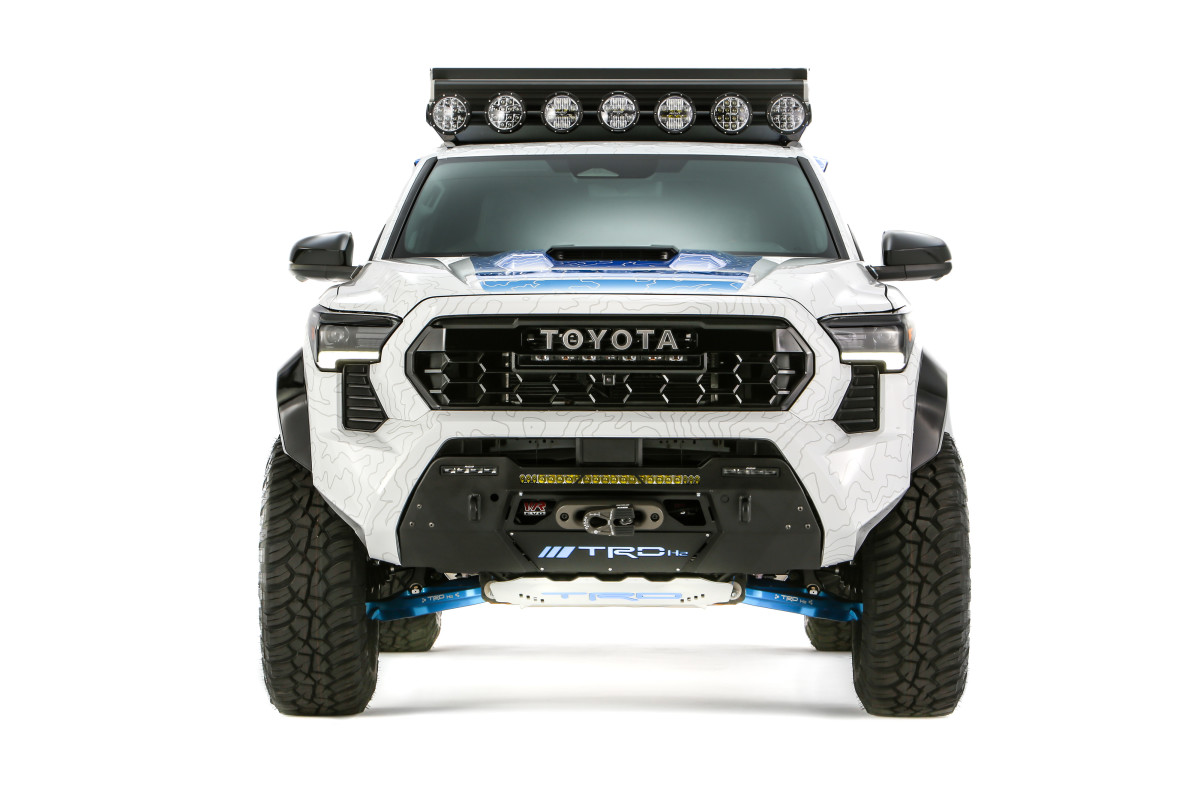
Toyota was transparent about the difficulty in transforming a normal Tacoma on the TNGA-F platform into one that can run on hydrogen, but the Toyota Racing Development (TRD) teams in California and North Carolina managed to pull it off.
“Time was our greatest challenge,” said Craig Cauthen, manager of TRD’s Emerging Technologies Group. “The question became: ‘What can we do on a tight timeline to be prepared for SEMA with a fully integrated vehicle that used to run on gasoline and now runs on hydrogen?’”
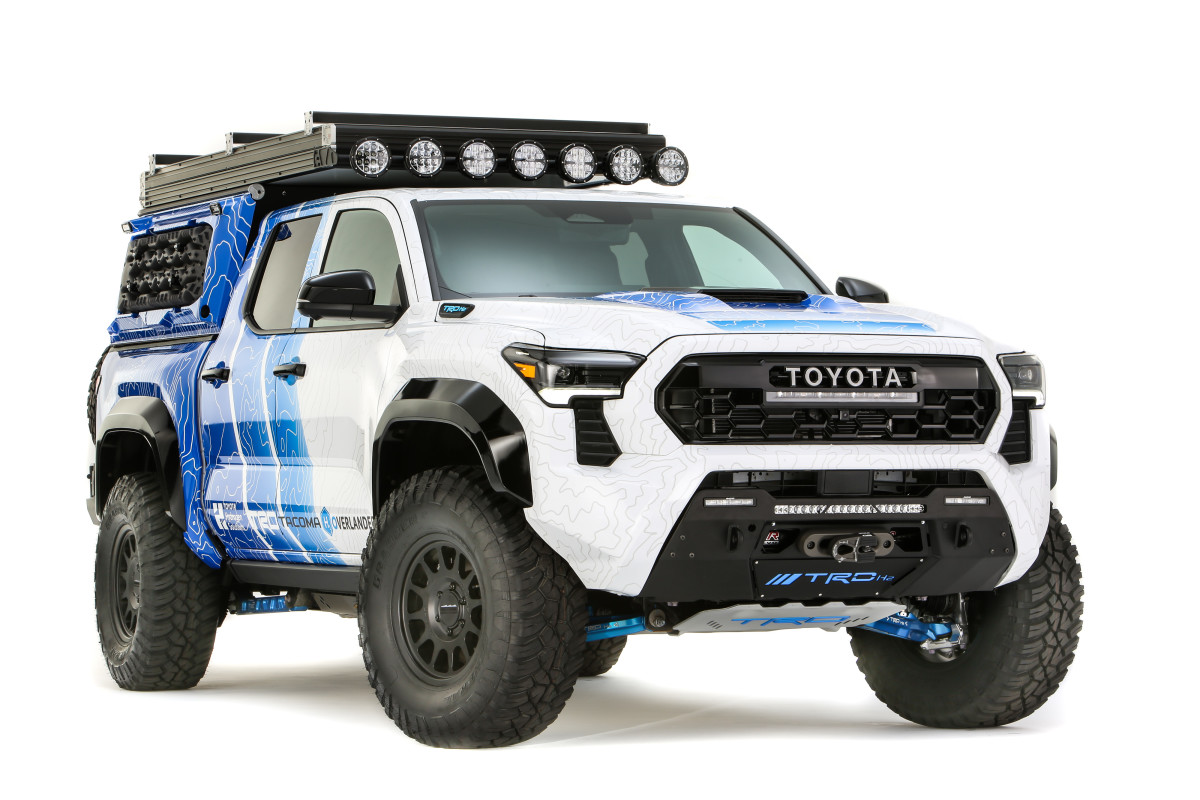
Toyota
Using CAD modeling and 3D-printed guides, the team came up with the H2-Overlander Concept. It features dual electric motors producing 547 horsepower, a second-generation fuel cell stack from the Mirai, and three hydrogen tanks with a capacity of 6 kg (just over 13 pounds). It also uses a 24.9-kWh lithium-ion battery.
A true four-wheel-drive truck, its instant torque is routed via a front limited-slip differential and rear electronic locking differential. It’s got heavy-duty Fox 2.5 Performance Elite Series shocks, a Tundra front brake upgrade, and custom wheels with off-road tires. Even the cooling system is unique, having been adapted from Lexus RZ and Tacoma TRD Pro components.
Patent-Pending Water Recovery System
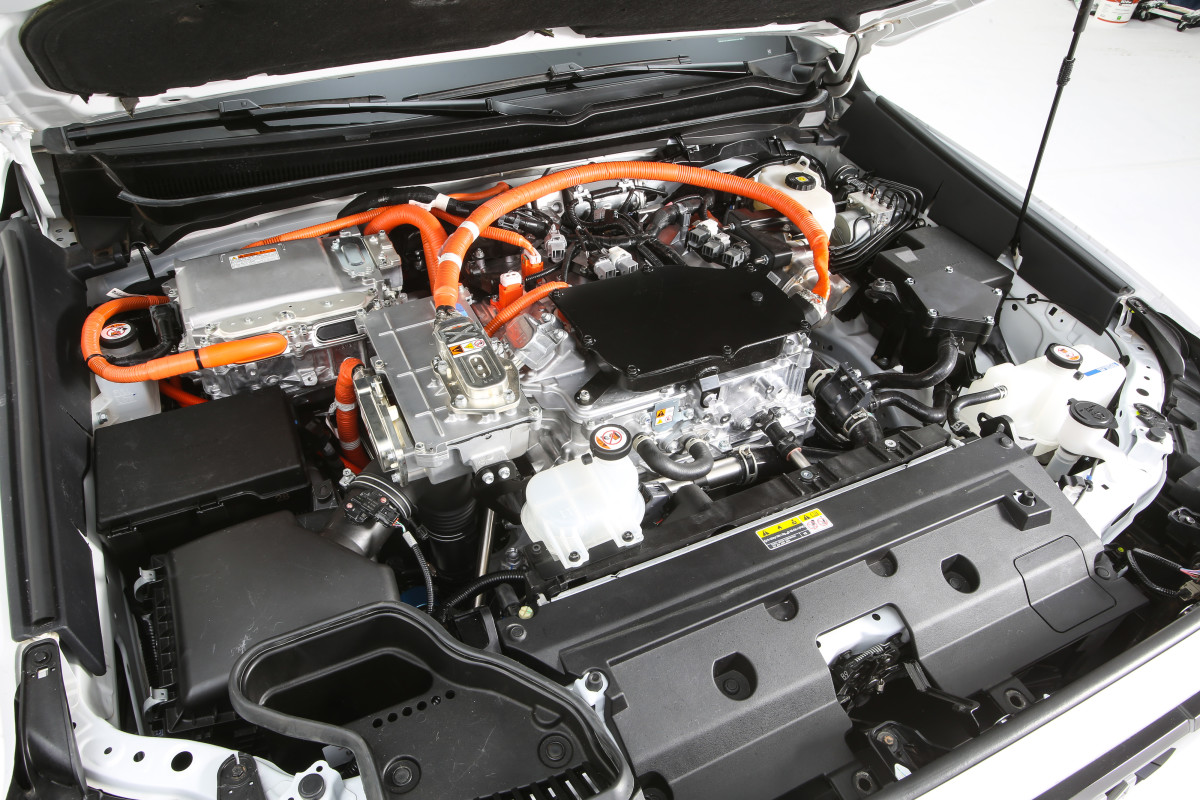
One of the most impressive innovations of the H2-Overlanding Concept is its TRD exhaust water recovery system, which is at the patent-pending stage. This system captures and filters the water produced as a byproduct of the hydrogen fuel cell stack. This water is distilled and has no minerals, so can be used for washing and showering—the use case is sound for an overlanding vehicle that can be used to venture far from any ablution facilities.
There’s more environmentally-friendly thoughtfulness in the butch exterior design, which uses a number of recycled carbon-fiber aero panels. It has off-road front/rear bumpers, integrated recovery points, dual swingouts, integrated recovery points, and DOT-compliant lighting.
“We wanted to keep that theme of TRD’s off-road heritage and desert racing while incorporating cutting-edge powertrain technologies,” said Cauthen. “This vehicle showcases the ability of the TRD team that goes beyond just what we can do on the racetrack.”
Related: Toyota’s Bold Bet: Why It’s Doubling Down on Hydrogen as Rivals Go All-Electric
Hydrogen Has a Tricky Future
Toyota Tacoma H2-Overlander Concept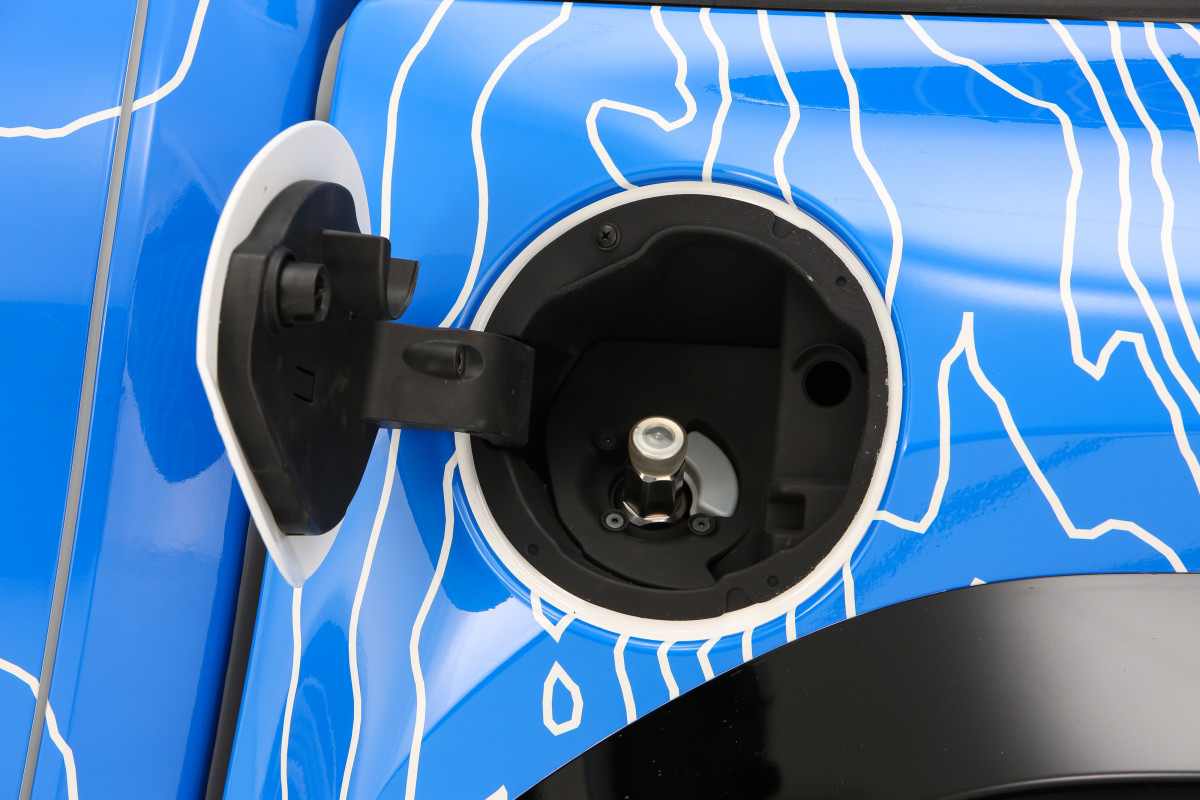
Currently, there are under 20,000 hydrogen fuel cell vehicles on the road in the United States, and the vast majority are located in California. The benefits of hydrogen power are obvious: An EV-like driving experience, zero tailpipe emissions, and the refueling speed of a normal gas car.
However, the limited infrastructure is a major stumbling block. Even conventional EVs are still out of the question for many Americans living in more remote, rural areas, so until hydrogen refilling points are more common, it’s a technology that will be reserved for a select few.
Toyota is forging ahead with the tech and its application in different vehicle types like the Tacoma H2-Overlander Concept, though. If the infrastructure does catch up, Toyota should have a headstart over most rivals.



